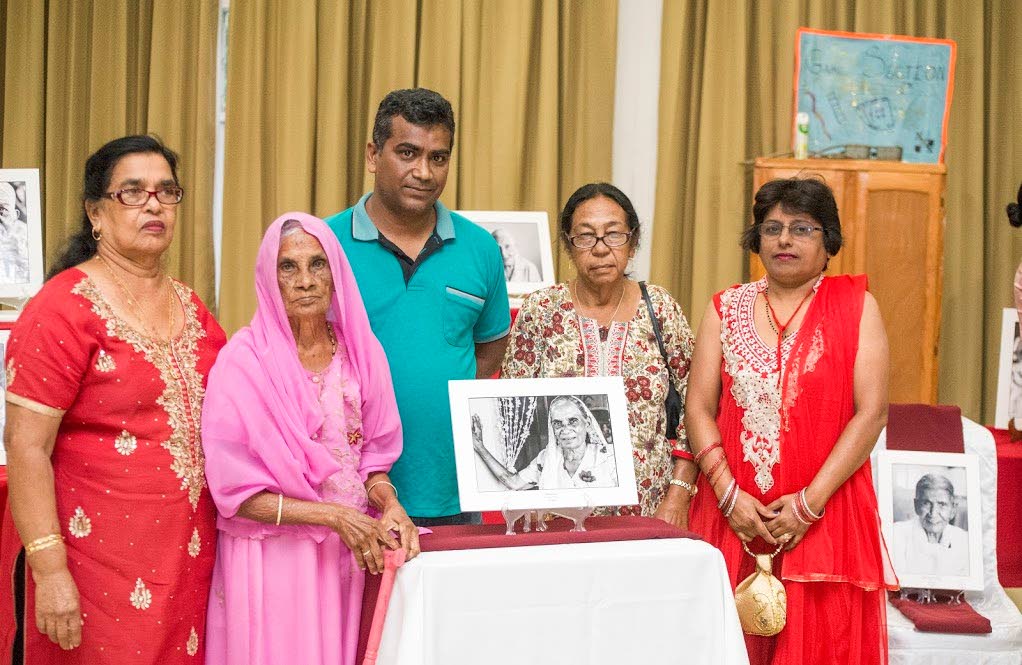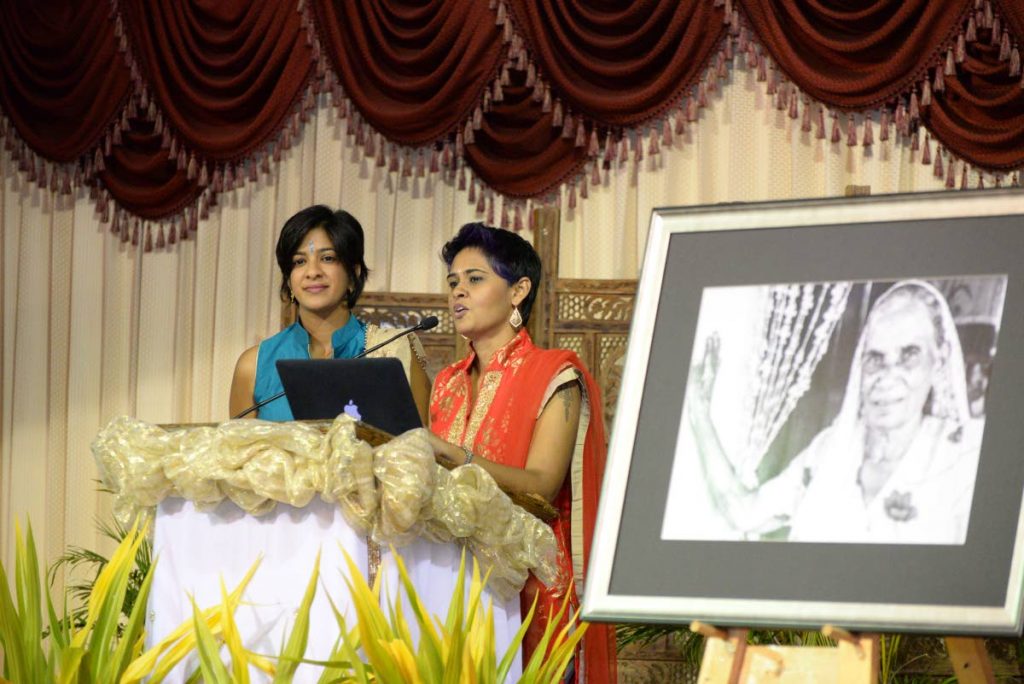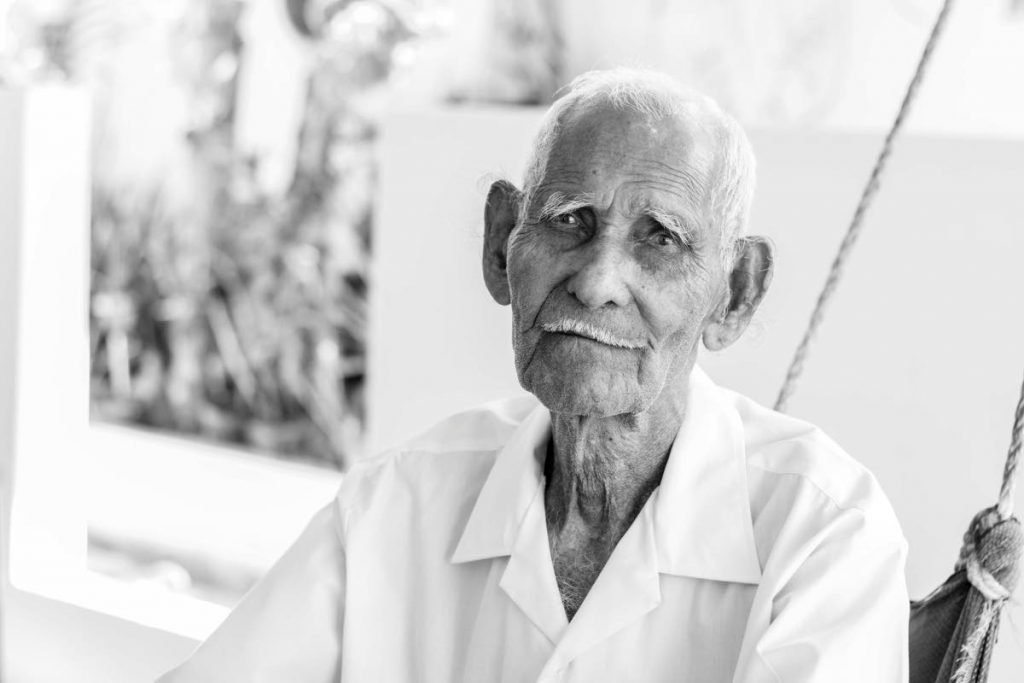Voices of a century

Andre Bagoo
WHEN her grandmother died in 2010, Nyla Singh found an unusual way to deal with the grief.
“I used the fact that I was a photographer as an excuse to go around the country speaking to elderly people,” Singh, 35, recalls. “Most of them were happy to have someone to talk to.”
Eight years later, Singh’s private mourning has morphed into a very public project. She has partnered with Sharda Patasar to produce a documentary.
“I would tell Sharda these stories I was being told and she suggested we start documenting these things,” Singh says. Voices of a Century consists largely of interviews done in 2015 with centenarians and their relatives, some of whom were among the last to make the journey from India to Trinidad during the final throes of East Indian indentureship. Hundreds of hours of footage was recorded, but then culled into a 26-minute film.

“Just to be in the presence of someone who’s lived for over 100 years was amazing,” Patasar, 41, says. “We wanted to bring this shared history to life in a medium that is popular.”
We get stories about courtship and love; communal living; life before modern infrastructure; and the many challenges indentured labourers faced.
“For me it was initially about the portraits,” says Singh, who has also collected a series of images in relation to the project. “But then we felt there was a need to have these voices, and the stories they tell, preserved. A lot of us don’t know these stories, these details, these little anecdotes.”

The interviews remind us how the ordinary things that never find their way into history books are, nonetheless, part of history. And though they focus on a specific community, they also underline how far we have come as a nation as a whole.
“All of this time has passed,” says Patasar. “Some people still live in bubbles. Certain things have stayed the same, but a lot has changed.”
The producers worked with Patricia Mohammed and what was then GISL to bring the past to life. The film – which was screened on Friday evening, days before Wednesday’s holiday observing the 173th anniversary of the arrival of East Indian immigrants, at Chinmaya Mission, Couva – interlaces the interviews with archive footage.

documentary by Sharda Patasar
and Nyla Singh. Photo by Nyla Singh
Heeralal Charu, who was 101 at the time of his interview with the filmmakers, speaks of the daily odyssey he had to make at a time when transport links were not as good as they are now. These days we often complain about being stuck in traffic for hours. But in Charu’s time, that would be a luxury.
“Back then it only had train from Chaguanas to go to Port of Spain and from Chaguanas to San Fernando,” Charu says. “After you go San Fernando and you want to go to any other place you have to walk or get car and thing to go.” Harridaye Boodoo recalls everyday life, including what she used to wear. She notes flour bags were often used as improvised clothing. Ishmael Khan Mohammed recalls his first and only love.
“Boy o boy that was sweet,” Mohammed, a tailor, says in one particularly memorable interview.
The interviews offer insights into practices that have now changed as society advances. For instance, Dharmie Deo recalls being married as a child bride and the tragedy of the early loss of a son. For the film-makers, the film is a document preserving history but also asking us to confront questions about social change.
“Have we really evolved?” Singh asks. Viewers are encouraged to visit the project’s Facebook page to share their own stories and comments.
For Patasar, there were also lessons to be learned about the secret to a long life.
“I noticed some common features of all of the interviewees,” Patasar says, smiling. “Each was frugal, ate very little, most had a diet which did not consist of meat. All returned to their roots in some way. So who knows? Maybe that’s the key.”
The project represents a shift for both Patasar, who is a respected sitarist and columnist for Sunday Newsday, and Singh.
“This is really a mid-life change for me,” says Patasar. “Both Nyla and I were high school teachers. She taught math and physics, I taught English language and literature but I left teaching to study and write. She left for photography.”
Despite their inherent synergies the journey from photography to film has, for Singh, been unexpected. Film has opened her eyes to learning about a whole new arena.
“I met one centenarian at a festival all those years ago,” Singh recalls. “I was fascinated by his hands. I took a photograph. But somehow I felt there was more to be explored.” Voices of a Century is a start.


Comments
"Voices of a century"